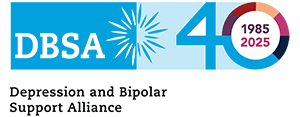On average, racial and ethnic minority populations report experiencing mental health problems at the same rate, and sometimes less frequently, than their white counterparts. Despite this, the consequences are often more severe and longer lasting.
- The U.S. population gets more diverse each year. By 2044, it is projected that more than half of all Americans will belong to an ethnic group other than non-Hispanic White.
(US Census. Projections of the Size and Composition of the US Population: 2014 to 2060. Current Population Reports. By Colby, SL and Ortman, JM. 2015.) - People from racial and ethnic minority groups are less likely to receive mental health care. In 2015, among adults with any mental illness, 48% of whites received mental health services, compared with 31% of blacks and Hispanics, and 22% of Asians.
(Agency for Healthcare Research and Quality. 2015 National Healthcare Quality and Disparities Report. 2016) - Although rates of depression are lower in blacks (24.6%) and Hispanics (19.6%) than in whites (34.7%), depression in blacks and Hispanics is likely to be more persistent.
(Budhwani H, Hearld K, and Chavez-Yenter D.Depression in Racial and Ethnic Minorities: the Impact of Nativity and Discrimination. Racial Ethn Health Disparities. 2015. 2(1):34-42.) - Rates of mental illnesses in African Americans are similar with those of the general population. However, when African Americans seek care, they often receive poorer quality of care and experience a lack of access to culturally competent care.
(Primm A, et al. “African Americans,” chapter in Disparities in Psychiatric Care. Ruiz and Primm editors. Washington, DC: Lippincott, Williams & Wilkins. 2010) - Only one out of three African Americans who need mental health care receive it.
(Dalencour M, et al. “The Role of Faith-Based Organizations in the Depression Care of African Americans and Hispanics in Los Angeles.” Psychiatric Services. 2017. 68(4):368-374.) - Compared with the rest of the population, African Americans are less likely to be offered either evidence-based medication therapy or psychotherapy.
(Wang PS, Berglund P, Kessler RC. “Recent care of common mental disorders in the United States: Prevalence and conformance with evidence- based recommendations.” J Gen Intern Med. 2000. 15(5), 284-292.) - Black people with mental health conditions — especially those with schizophrenia, bipolar disorders, and other psychoses — are more likely to be incarcerated than people of other races.
(U.S. Department of Justice. “Prisoners in 2015.” NCJ 250229 (Bureau of Justice Statistics Bulletin). 2016. https://www.bjs.gov/content/pub/pdf/p15.pdf.
Hawthorne W, et al. “Incarceration among adults who are in the public mental health system: rates, risk factors, and short-term outcomes.” Psychiatric Serv. 2012 Jan;63(1):26-32.) - Roughly 2.7 million people who identify as Asian American/Pacific Islander have a mental and/or substance use disorder.
(Substance Abuse and Mental Health Services Administration. (2019). 2018 National Survey on Drug Use and Health: Methodological summary and definitions. Rockville, MD: Center for Behavioral Health Statistics and Quality, Substance Abuse and Mental Health Services Administration. https://www. samhsa.gov/data) - Asian Americans, alone, report fewer mental health conditions when compared with non-Hispanic whites and other racial and ethnic groups. Hawaiian/Pacific Islander adults report similar rates of mental illness as compared with non-Hispanic whites.
(Mental and Behavioral Health – Mental and Behavioral Health – Native Hawaiians/Pacific Islanders https://www.minorityhealth.hhs.gov/omh/browse. aspx?lvl=4&lvlid=172) - Asian American/Pacific Islanders are least likely to seek mental health services than any other racial/ethnic group. They are also three times less likely to access mental health services than their white counterparts.
(Urban Institute, Health Policy. (2019) Fighting the Stigma: Mental Health among Asian Americans and Pacific Islanders) - Trauma also has an outsized impact on diverse populations. For example, Southeast Asian refugees are likely to receive a diagnosis with PTSD relating to their experiences with immigration. A study reported 70% of Southeast Asian refugees receiving mental health treatment were diagnosed with PTSD.
(Mental and Behavioral Health – Asian Americans. https://minorityhealth.hhs.gov/omh/browse.aspx?lvl=4&lvlid=54) - About one out of three asylum-seekers and refugees experience high rates of depression, anxiety, and post-traumatic stress disorders (PTSD)
(Turrini, G., Purgato, M., Ballette, F., Nose, M., Ostuzzi, G. & Barbui, C. (2017). Common mental disorders in asylum seekers and refugees: umbrella review of prevalence and intervention studies. International Journal of Mental Health Systems, 11: 51) - LGBTQ people are twice as likely to have a mental health disorder in their lifetime when compared to heterosexual men and women.
(Semlyen J, et al. “Sexual Orientation and Symptoms Of Common Mental Disorder or Low Wellbeing: Combined Meta-Analysis Of 12 UK Population Health Surveys.” BMC Psychiatry. 2016. 24;16:67. https://www.ncbi.nlm.nih.gov/pmc/articles/PMC4806482/) - LGBTQ individuals are 2.5 times more likely to experience depression, anxiety, and substance use compared to heterosexual individuals.
(Kates, J, et al. “Health and Access To Care And Coverage For Lesbian, Gay, Bisexual, and Transgender Individuals in the U.S. Retrieved.” Kaiser Family Foundation. 2016. http://kff.org/report-section/health-and-access-to-care-and-coverage-for-lesbian-gay-bisexual-and-transgender-healthchallenges/) - Many LGBTQ people experience stigma and discrimination when accessing health care, leading some to delay necessary care or forego it altogether.
(Safer J, et al. “Barriers to Health Care for Transgender Individuals.” Curr Opin Endocrinol Diabetes Obes. 2016. 23(2):168-171. https://www.ncbi. nlm.nih.gov/pubmed/26910276) - The most common mental health condition in women is depression. Twice as many women experience depression in their lifetime than men. Approximately 1 in 9 adult women have had at least one major depressive episode in the past year.
(National Institutes of Health. 2008. Males and Eating Disorders. Medline Plus, 3(2):18. www.nlm.nih.gov/medlineplus/magazine/issues/spring08/ articles/spring08pg18.html) - Each year, 1 in 5 women in the U.S. has a mental health condition such as depression, PTSD, or an eating disorder.
(National Center for PTSD. 2015. Women, Trauma, and PTSD. http://www.ptsd.va.gov/public/PTSD-overview/women/women-trauma-and-ptsd.asp)
The disparities in mental healthcare are systemic and complex. Racial, ethnic, gender and sexual minority groups experience negative mental health outcomes because of a variety of factors, including: the inaccessibility of high quality mental health care services, stigmas surrounding mental health, and discrimination.
To learn more about what DBSA is doing to address disparities in healthcare and how you can get involved, visit our advocacy center.


